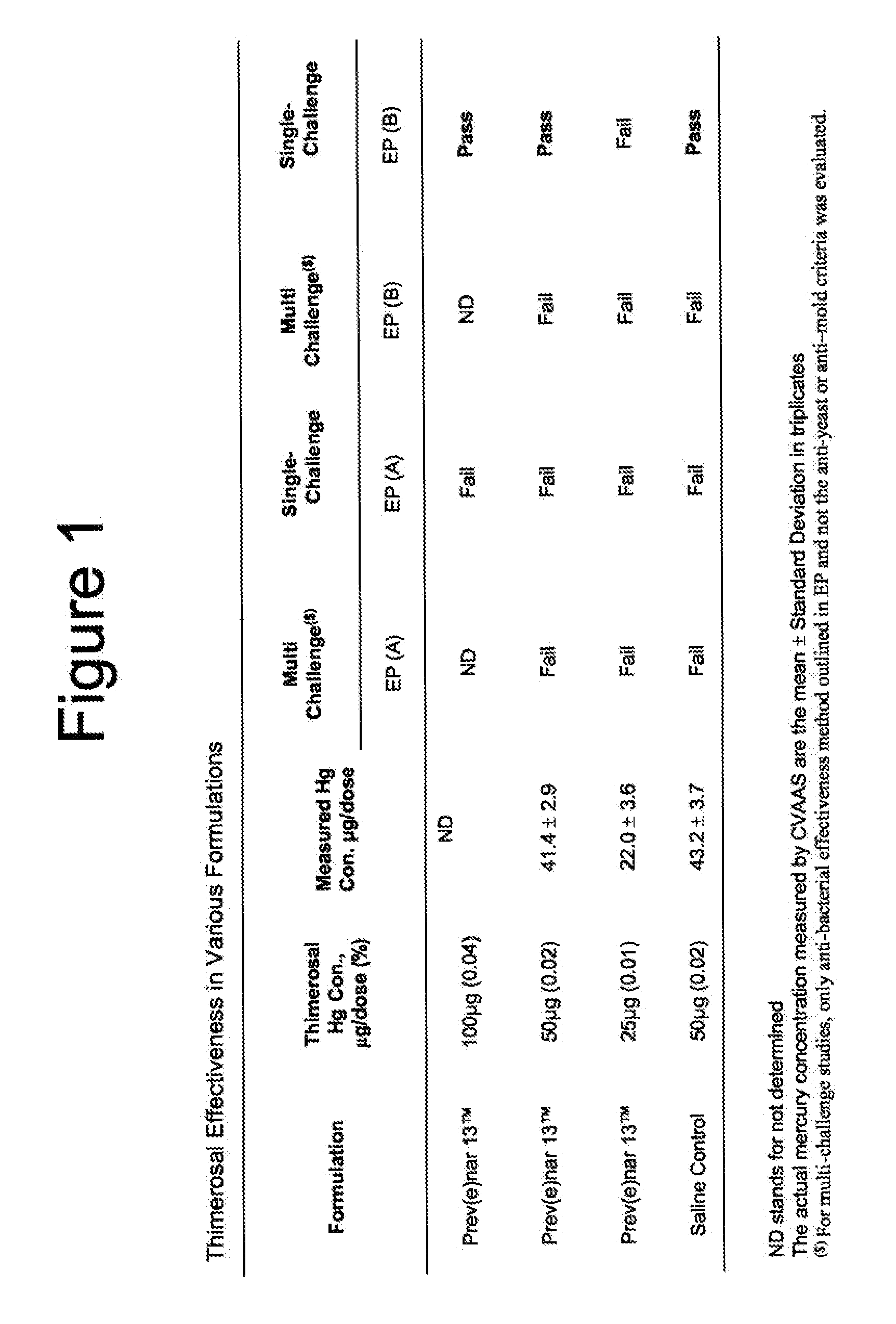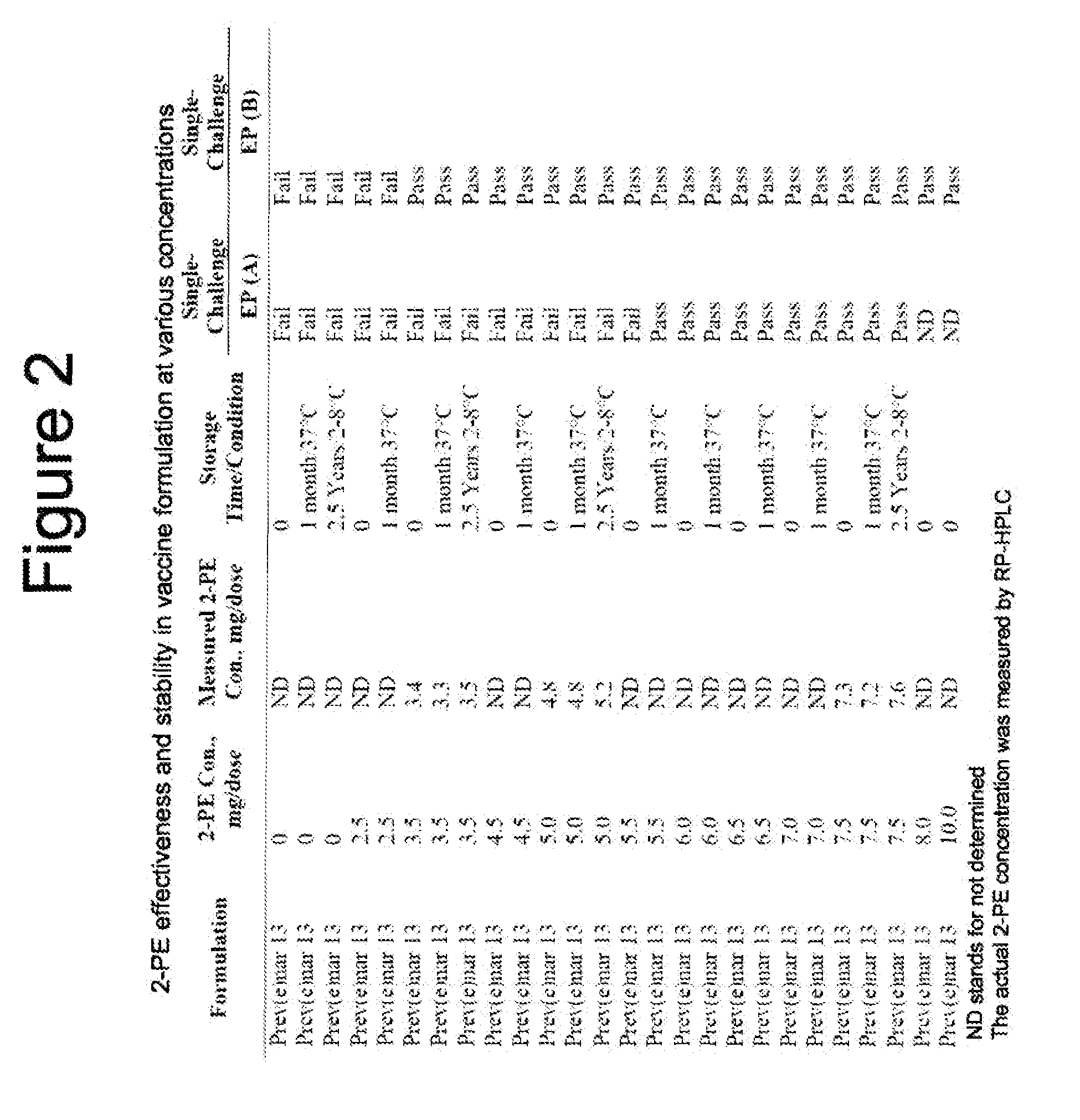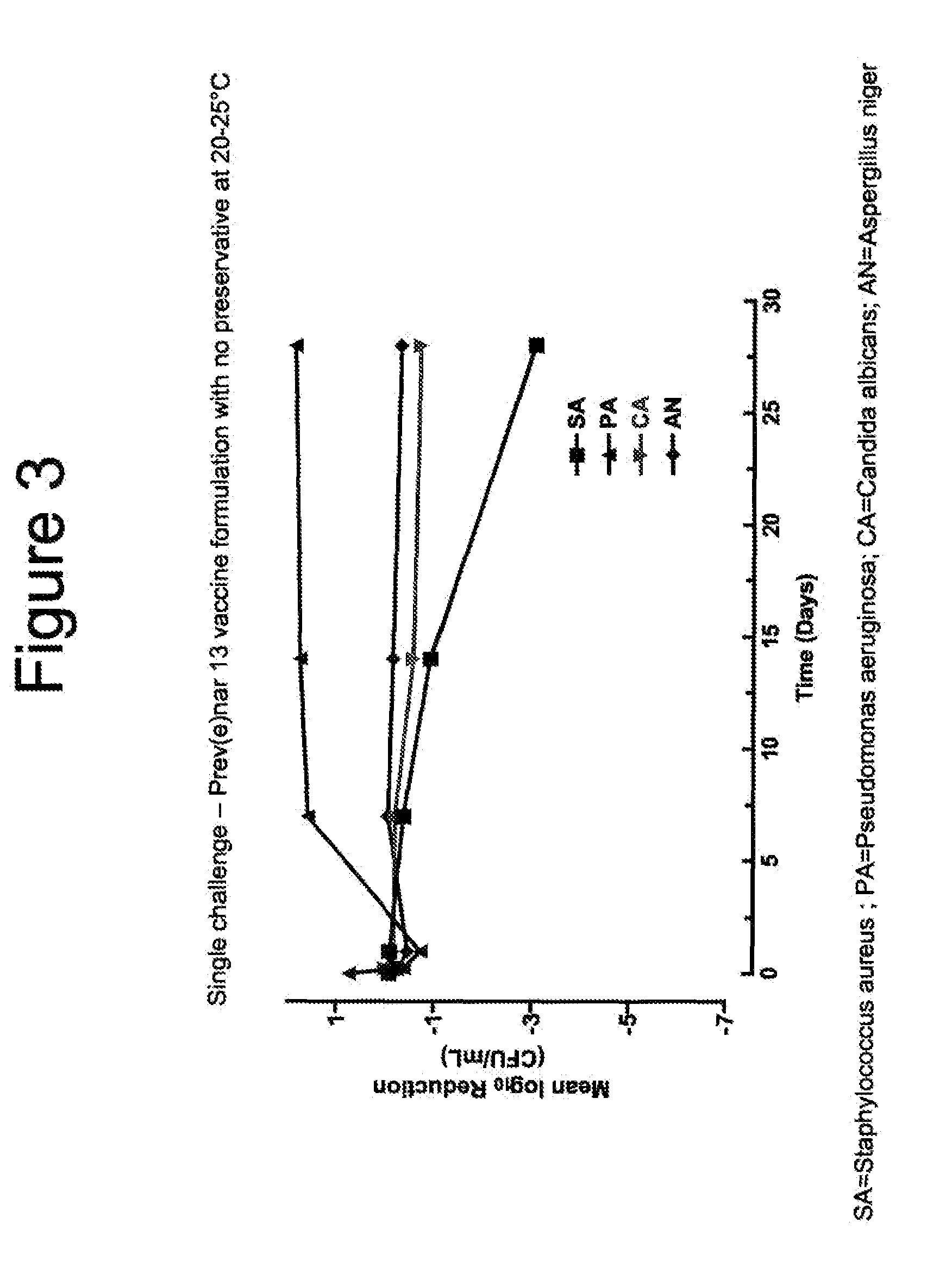Vaccine formulations
a technology of vaccine formulation and vaccine, applied in the field of vaccine formulation, can solve the problems of high disease burden in developing countries, increase the overall cost of vaccination, and jeopardize the effectiveness of immunization programs in developing countries, and achieve the effect of reducing or negligible loss of activity
- Summary
- Abstract
- Description
- Claims
- Application Information
AI Technical Summary
Problems solved by technology
Method used
Image
Examples
example 1
Preliminary Preservative Screening Study
[0112]Formulation development of multi-dose Prev(e)nar 13 vaccine started with preliminary screening of preservatives, including Phenol (0.25%), 2-Phenoxyethanol (5 mg / mL), Meta-Cresol (0.3%), Methylparaben and Propylparaben (0.18% and 0.12%, respectively) in Prev(e)nar 13 formulations.
[0113]To test for preservative effectiveness, aliquots of vaccine were inoculated with the following organisms:
[0114]1. Staphylococcus aureus (Bacteria; ATCC #6538)
[0115]2. Pseudomonas aeruginosa (BacteriaATCC #9027)
[0116]3. Candida albicans (Yeast; ATCC#10231)
[0117]4. Aspergillus niger (Mold; ATCC #16404)
[0118]Thirty milliliters (ml) of each vaccine formulation with and without Thimerosal or 2-PE at indicated concentrations or saline containing Thimerosal at 0.02% were inoculated in triplicates with a suspension of each test organism to achieve an inoculum density of approximately 105 to 106 CFU / ml at time 0 (CFU=colony forming units). The volume of each inocul...
example 2
Preservative Effectiveness Test by Single Challenge Method: 2-PE and Thimerosal
[0125]Thimerosal at 0.01% concentration is commonly used in major vaccines licensed in the U.S. The effectiveness of Thimerosal as a preservative was tested using the same single-challenge method described above in Example 1. Prev(e)nar 13 vaccine formulation containing Thimerosal at 0.01% (equivalent to 25 μg mercury per 0.5 mL dose) did not meet the European acceptance criteria EP-A or EP-B established by preservative anti-microbial effectiveness method of EP. It however, did pass acceptance limits established by the U.S. or Japanese Pharmacopoeia, since the acceptance limits established by these compendial methods are less stringent compared to that established in EP. See FIG. 1.
[0126]Thimerosal at 0.02% (containing 50 μg mercury per dose), which is equivalent to twice the recommended concentration of Thimerosal in some of the U.S. licensed vaccines, or at 0.04% (containing 100 μg mercury per dose), wh...
example 3
Single Challenge Method with 2-PE and Thimerosal: Change in Contaminant Level
[0128]Absence of preservatives in the Prev(e)nar 13 vaccine formulation resulted in a slow growth of P. aeruginosa, no change to C. albicans levels and A. niger and slow reduction in colony forming units of S. aureus over a 28 days challenged period at 20-25° C. (FIG. 3).
[0129]The presence of 0.01% Thimerosal (containing 25 μg mercury per dose) reduced the contamination levels of all four inoculated micro-organisms. However, the inhibition of S. aureus and C. albicans was weaker than the inhibition of P. aeruginosa and A. niger (FIG. 4). A dose response relationship on the rate of anti-microbial effect of Thimerosal in Prev(e)nar 13 vaccine formulations was seen, especially against C. albicans, with the reduction of contamination levels being more pronounced with 0.02% Thimerosal (FIG. 5). Absence of Prev(e)nar 13 in a 0.02% Thimerosal-containing saline formulation slightly improved the growth inhibitory ef...
PUM
| Property | Measurement | Unit |
|---|---|---|
| concentration | aaaaa | aaaaa |
| concentration | aaaaa | aaaaa |
| concentration | aaaaa | aaaaa |
Abstract
Description
Claims
Application Information
 Login to View More
Login to View More - R&D
- Intellectual Property
- Life Sciences
- Materials
- Tech Scout
- Unparalleled Data Quality
- Higher Quality Content
- 60% Fewer Hallucinations
Browse by: Latest US Patents, China's latest patents, Technical Efficacy Thesaurus, Application Domain, Technology Topic, Popular Technical Reports.
© 2025 PatSnap. All rights reserved.Legal|Privacy policy|Modern Slavery Act Transparency Statement|Sitemap|About US| Contact US: help@patsnap.com



